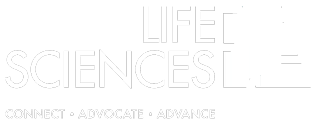 Since 2005, United Benefit Advisors® (UBA) has surveyed thousands of employers across the nation regarding their health plan offerings, their ongoing plan decisions in the face of significant legislative and marketplace changes, and the impact of these changes on their employees and businesses. The UBA survey represents the nation’s largest health plan benchmarking survey and the most comprehensive source of reliable benchmarking data.
Since 2005, United Benefit Advisors® (UBA) has surveyed thousands of employers across the nation regarding their health plan offerings, their ongoing plan decisions in the face of significant legislative and marketplace changes, and the impact of these changes on their employees and businesses. The UBA survey represents the nation’s largest health plan benchmarking survey and the most comprehensive source of reliable benchmarking data.
As always, the survey revealed several noteworthy trends and developments that bear scrutiny and the ongoing attention of employers interested in making the most informed health care plan decisions possible. For example, among the most striking trends revealed by the survey, employers have overwhelmingly opted for early renewals of their plans—a delay tactic that helped them avoid costly Patient Protection and Affordable Care Act (PPACA)-compliant plans and manage costs. Another cost management tactic employers are using is to increase out-of-pocket costs for employees, with a “new normal” emerging for these higher cost thresholds.
Employers typically continue to offer one preferred provider organization (PPO) health plan option to employees, while also still widely offering family coverage. In addition, wellness program adoption seems to be in a holding pattern, as pending litigation and regulatory changes swirl on these offerings. Among employers providing wellness programs, health risk assessments and incentives are increasingly common offerings.
Plans in the Northeast U.S. continue to be the richest—and most expensive—and are at risk of being subject to the looming Cadillac tax. Government employees have the most generous plans with the highest costs—and they pay the least toward their overall coverage costs. Conversely, construction industry employees cost the least to cover but those employees pay the most toward costs.
Regarding cost increases, the smallest employers (0 to 49 employees) saw the lowest increases, a surprising break for them due to an unusual option they had over larger employers to remain with non-PPACA-compliant plans. In short, this was a reprieve for a group that usually faces the highest increases. Self-funding of plans, particularly among small employers, has not yet surged, but is still anticipated to do so as employers run out of other avoidance strategies.
The prevalence of consumer-driven health plans (CDHPs) continues to grow, as does employee enrollment in these plans, despite lower contributions to health savings accounts (HSAs) (which are often tied to CDHPs to entice participation). And, finally, prescription drug plans are increasingly offering four or more tiers, along with ever-increasing copays—a trend that might fall off as they must all eventually tie to out-of-pocket maximums under PPACA.
For more information to help you benchmark your health plan, download the 2014 UBA Health Plan Survey Executive Summary or contact a local UBA Partner for a customized benchmarking report.





